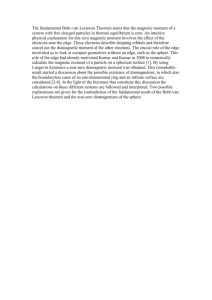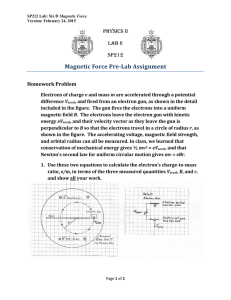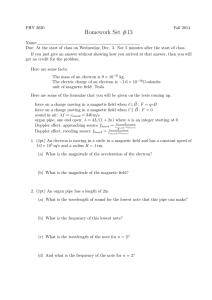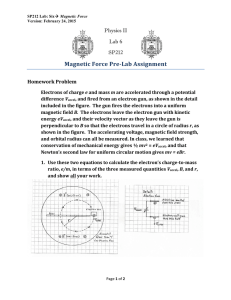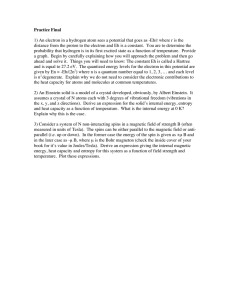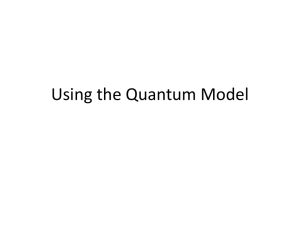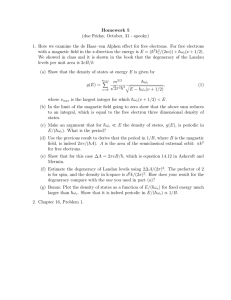Langevin treatment of Diamagnetism
advertisement
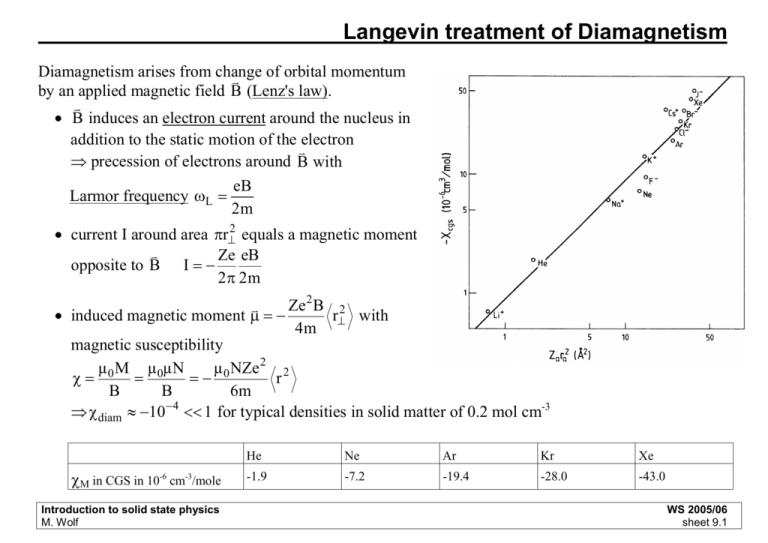
Langevin treatment of Diamagnetism Diamagnetism arises from change of orbital momentum v by an applied magnetic field B (Lenz's law). v • B induces an electron current around the nucleus in addition to the static motion of the electron v ⇒ precession of electrons around B with eB Larmor frequency ωL = 2m • current I around area πr⊥2 equals a magnetic moment v Ze eB opposite to B I = − 2π 2m 2 Ze B 2 v r⊥ with • induced magnetic moment µ = − 4m magnetic susceptibility µ0 M µ0µN µ0 NZe 2 2 χ= = =− r B B 6m ⇒ χdiam ≈ −10− 4 << 1 for typical densities in solid matter of 0.2 mol cm-3 χM in CGS in 10-6 cm-3/mole Introduction to solid state physics M. Wolf He Ne Ar Kr Xe -1.9 -7.2 -19.4 -28.0 -43.0 WS 2005/06 sheet 9.1 Paramagnetism v Paramagnetism of electrons occurs for systems with non-vanishing magnetic moment µ 1. atoms, molecules, lattice defects with odd electron number (Na, NO, organic free radicals) 2. free atoms and ions with partly filled inner shells (transition metals, rare earths, actinides) 3. few compounds with even number of electrons (O2) 4. metals v v v v v v Magnetic moment per atom: µ = γhJ = − gµB J , with J = L + S eh (Bohr magneton) magnetic moment of a free electron: µ B = 2m v v Energy levels in a magnetic field: U = −µ ⋅ B = m jgµB B , with the magnetic quantum number mj = -J,...,J For a single spin: mj=±1/2, g=2 Two level system with U=±µBB with population N1 and N2: µB N2 e− x N1 ex = x = = . ⇒ Magnetization M(B,T) , with x , x x x − − k BT N e +e N e +e ⎛ µB ⎞ ex − e−x M ( B, T ) = µ( N1 − N 2 ) = Nµ x = Nµ tanh( x ) , which reduces for x<<1 to M ( B , T ) ≈ Nµ ⎟⎟ ⎜⎜ −x e +e ⎝ k BT ⎠ Introduction to solid state physics M. Wolf WS 2005/06 sheet 9.2
